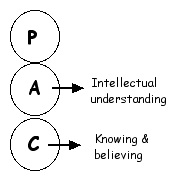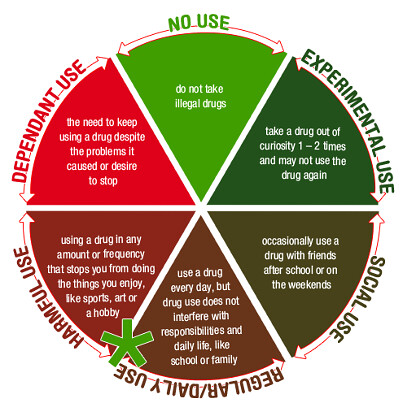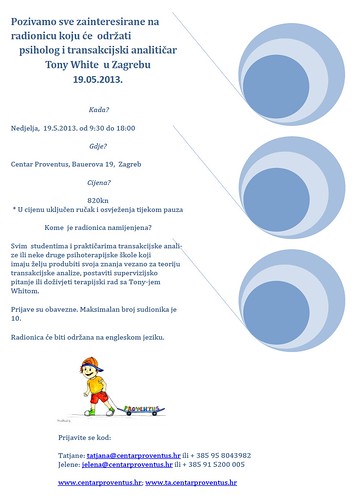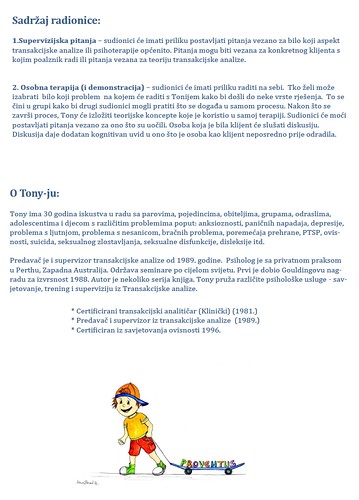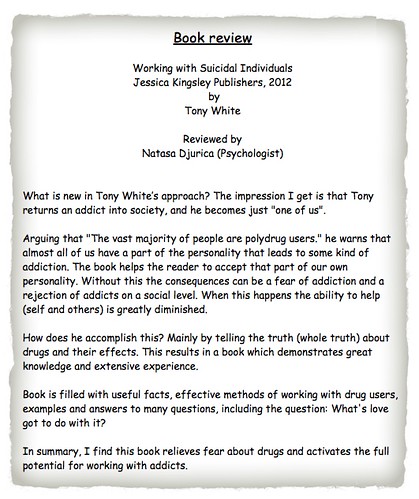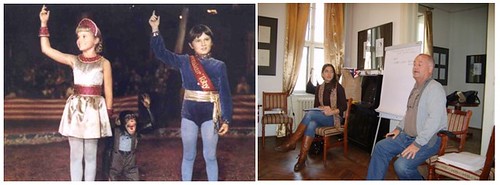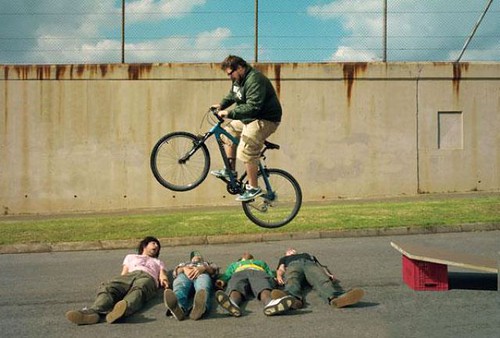Current list of university, college and training insititute libraries that have the book - Working with drug and alcohol users
The book has only been out 4 months and there are a 116 (& these are only the ones I am aware of at this stage)
The British library - British National Bibliography (UK)
Ashforn Library Kent (UK)
Tunbridge Wells Library Kent (UK)
Norfolk County Council (UK)
Reading Borough Libraries (UK)
Westminster Libraries(UK)
University of Sussex (UK)
University of East Anglia (UK)
University of Hertfordshire (UK)
University of Huddersfield (UK)
University of Hull (UK)
University of Leicester (UK)
University of Cambridge (UK)
Kingston University (UK)
Brunel University (UK)
Oxford University (UK)
Sandwell Hospital library (UK)
Prince of Wales Hospital library (Wales)
Cefn Coed Hospital, Swansea (Wales)
Neath Port Talbot Hospital (Wales)
Glan Clwyd Hospital Library (Wales)
National Library of Wales (Wales)
National Library of Scotland (Scotland)
Tubingen University (Germany)
Oslo University College (Norway)
Stockholms Universitet (Sweden)
Zurich Central Library (Switzerland)
University of South Africa (South Africa)
University of the Western Cape (South Africia)
Library and Archives Canada (Canada)
Algoma University (Canada)
Atlantic School of Theology (Canada)
Nova Scotia College University (Canada)
Saint Francis Xavier University (Canada)
Cape Breton University (Canada)
Mount Saint Vincent University (Canada)
Saint Mary’s University (Canada)
Sherbrooke University (Canada)
Dalhousie University Design & Technology library (Canada)
Dalhousie University Health Sciences library (Canada)
Dalhousie University Law library (Canada)
Dalhousie University MacRae library (Canada)
Dalhousie University Killam Memorial library (Canada)
Wilfrid Laurier University (Canada)
University of Alberta (Canada)
University of King’s College (Canada)
University of Waterloo (Canada)
University of Calgary (Canada)
Université Sainte-Anne (Canada)
Université du Québec en Outaouais (Canada)
Chisholm Institute of TAFE (Aust)
Cairns Base Hospital (Aust)
National Library of Australia (Aust)
Mater Hospital Library (Aust)
King Edward Memorial Hospital (Aust)
University of Newcastle (Aust)
University of Ballarat (Aust)
University of Canberra (Aust)
Monash University (Aust)
Deakin University (Aust)
Bond University (Aust)
RMIT University (Aust)
Queensland University of Technology (Aust)
Gold Coast Health Services (Aust)
State library of Western Australia (Aust)
University of California, Merced (USA)
Library of Congress (USA)
Marylhurst University (USA)
Richard Stockton College of New Jersey (USA)
SUNY College at Plattsburgh (USA)
Marymount University (USA)
New York University (USA)
Brigham Young University (USA)
Pennsylvania State University (USA)
Ohio State University (USA)
Arizona State University (USA)
Colorado State University (USA)
Multnomah County library (USA)
Tennessee State University (USA)
University of Tennessee (USA)
Austin Peay State University (USA)
Indiana University (USA)
Webster University (USA)
Temple University (USA)
Southern Methodist University (USA)
Eden Seminary Library (USA)
Birmingham-Jefferson Public Library (USA)
Saint Mary of the Woods College (USA)
Williams College (USA)
Rensselaer Polytechnic Institute (USA)
Central Michigan University (USA)
George Mason University (USA)
Virginia Commonwealth University (USA)
Southern Illinois University (USA)
Boise State University (USA)
Purdue University Library (USA)
Appalachian State University (USA)
University of North Carolina at Greensboro (USA)
University of Virginia (USA)
University of Notre Dame (USA)
University of Missouri - Columbia (USA)
University of Chicago (USA)
University of Colorado at Boulder (USA)
University of Iowa (USA)
University of Minnesota (USA)
University of Alabama (USA)
University of Texas at Dallas (USA)
Texas State University-San Marcos (USA)
Unitec Institute of Technology (New Zealand)
Rotorua Public Library (New Zealand)
Central City Library (New Zealand)
Mt Albert Community Library (New Zealand)
University of Auckland (New Zealand)
Hong Kong PolyU Library (China)
Chinese University of Hong Kong (China)
University of Hong Kong (China)



